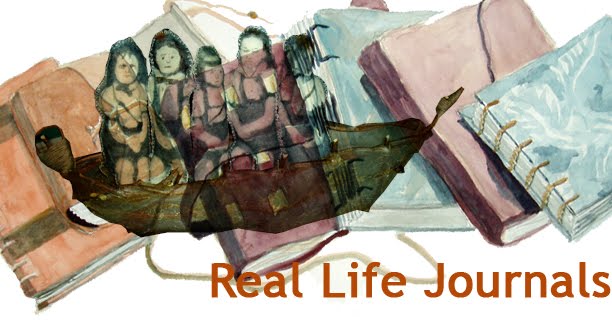 Whenever there's a convergence of festivals from various traditions, you can be sure the festivals share a common root, although the present-day celebrations may be far from similar to each other. At the beginning of February there's the sweet and welcome convergence of Imbolc, which was considered the beginning of spring in Medieval Ireland, among other places, on February 1; Groundhog Day and Candlemas on the second; and on the third, St. Blaise and the blessing of throats. Imbolc falls at the point equidistant between the short day of winter solstice and the equal-light-equal-dark day of the spring equinox, a turning of the dark winter tide toward the light of spring. It was a day on which rituals were performed to ensure a good harvest.
Whenever there's a convergence of festivals from various traditions, you can be sure the festivals share a common root, although the present-day celebrations may be far from similar to each other. At the beginning of February there's the sweet and welcome convergence of Imbolc, which was considered the beginning of spring in Medieval Ireland, among other places, on February 1; Groundhog Day and Candlemas on the second; and on the third, St. Blaise and the blessing of throats. Imbolc falls at the point equidistant between the short day of winter solstice and the equal-light-equal-dark day of the spring equinox, a turning of the dark winter tide toward the light of spring. It was a day on which rituals were performed to ensure a good harvest. Candlemas was celebrated by Early Christians as a feast of light, a time when new candles were blessed for the coming year. It was also tied in with the feast of the Purification of Mary, 40 days after the birth of Jesus, when Mary was allowed to re-enter the temple after childbirth following water rituals, a Jewish requirement. Both light and the goddess returning? You can be sure these Christian feasts had roots in much older celebrations.
Groundhog Day began in the 1500s in England at the time of year when farmers were eager to get going with those traditional Medieval February tasks, and they began to check on hibernating animals. They knew that the animals were able to determine when it was safe to wake up from hibernation. In England the hedge hog was the animal most handy for observation. In America, where there were no hedge hogs, immigrants from England used ground hogs as weather predictors.
In our Catholic neighborhood in New Orleans, St. Blaise Day was a nice, if slightly odd, break in the tedium of winter. We went to Mass during the school day and at one point, we marched up to the front og church where a robed priest, holding two crossed candles (unlit), pressed the crossing gently to our throats and blessed them to ensure that we would not get sore throats. This was auspicious timing, as Mardi Gras was just around the corner and we would be screaming ourselves hoarse at every parade: "Hey Mister!! Throw me something!!!!" The story was that St. Blaise had been a bishop who had saved a boy's life by blessing him while he was choking on a fish bone.
I celebrated Imbolc-Groundhog Day by taking a caput mortuum walk in the woods. Caput mortuum is a deep reddish-purplish-brownish pigment that comes from iron oxide -filled ochres. I've found it not far from here in the banks of a lake that had been lowered when a dam had been opened. The name caput mortuum means "head [and the expression caput! implies chopping off of a head]" "of death", and Goethe is said to have remarked that this color signals the death of death-- the end of winter. It is the first warm color to emerge in the earliest spring. Goethe said it was the color of red maple blossoms, and it is. I found many examples of it today: the raspberry and blackberry canes are now turning bright caput mortuum, thanks to the rising sap; tiny buds on the apple trees are that color as they emerge; wild rose stems are blushing with c.m., as are the small leaves that are beginning to come out.
Later I walked around our yard and found even more examples, all labeled on the left of the bottom page. On the right of this page is a copy of a Medieval manuscript painting, which shows the rural tasks of February-- digging, plowing, sowing. Even though Punxatawney Phil is predicting more winter this year, the plants around here are not so sure.


No comments:
Post a Comment